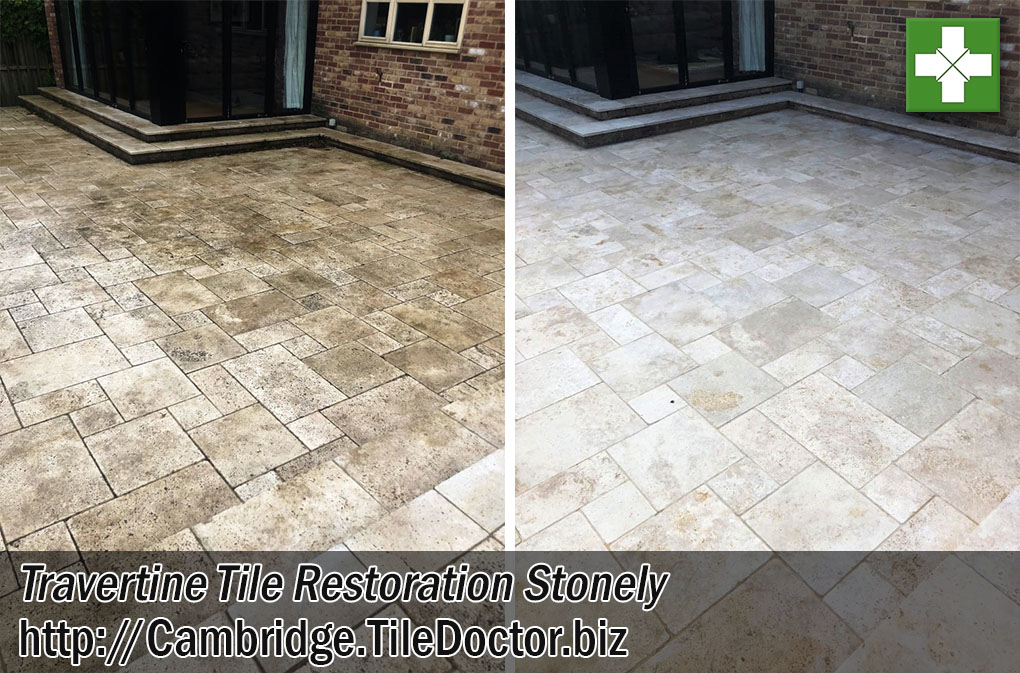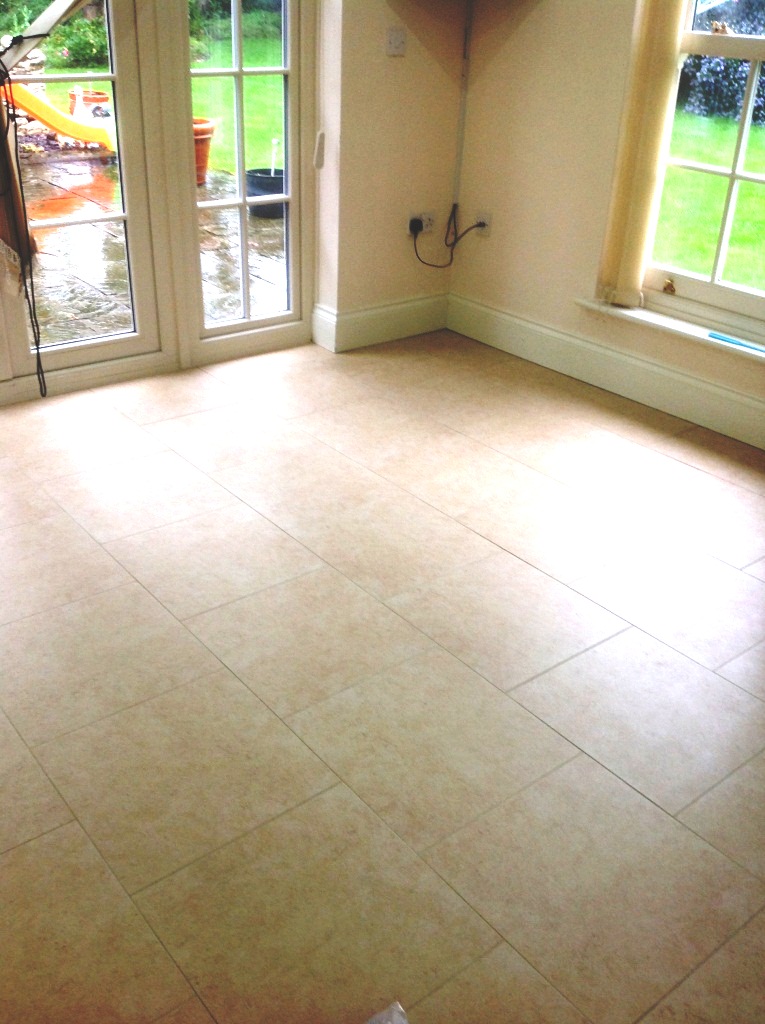Earlier this year I was asked to quote for repairing and restoring a Victorian Tile Hallway in St Neots. The floor was in good physical condition for its age however a section of tiling had been removed to facilitate the installation of a new pipe. The contractor was not very sympathetic to the old floor and after removing the tiles and installing the pipe they had simply back filled with concrete ruining the overall look of the floor.

The rest of the Victorian Tiled Hallway had not been properly cleaned and sealed in some time and any protective sealer had long since worn off in the busier parts of the hallway. Without a sealer in place dirt had penetrated the pores of the tile leaving them looking dull and impossible to keep clean.
Period features like this floor are very desirable these days and understandably the owner was every enthusiastic to have the floor fully restored back to its best possible condition.
I discussed with him the work we needed to do, which included repairing the concreted sections, deep cleaning the floor and then finish with the application of a protective sealer. I was confident I could source similar tiles and would be able to get the floor looking great again. We agreed a price and booked the work in to be carried out.

Repairing a Victorian Tiled Hallway Floor
I started by manually removing all the concrete at the back of the hall with a bolster and hammer. Once cleaned of rubble the hole was filled with a self-levelling compound to even out the area in order to get the surface to the right level ready for tiling.

Fortunately, I had managed to source nearly identical tiles to replace the missing ones. There are a few places that keep stock, so it makes it easier to restore this type of floor.
The border was laid first followed by filling in the middle with the correct pattern.

Deep Cleaning a Victorian Tiled Hallway Floor
Once grouted the whole floor was stripped and cleaned using Tile Doctor Remove and Go which is a coatings remover that is designed to clean and remove old sealers from tile and stone. The product is diluted with water, sprayed onto the tiles and then allowed to soak in for ten minutes before scrubbing it in. The solution soon turns into a dark slurry as the dirt is released from the pores of the tile and this is then rinsed off with water and extracted with a wet vacuum.

The next step was to treat any potential efflorescence problems that may appear later due to the lack of a damp-proof membrane under the floor. This is quite a common issue with old floors where moisture can rise through the tile carrying with it salts from the sub floor. To counter this problem and neutralise the alkaline salts the floor is further cleaned with Tile Doctor Grout Clean-up which is an acidic product. To remove the product another round of rinsing and extracted is carried out.
During the cleaning I noticed that some of the tiles had damage to the surface from being concreted over, so I renovated the surface using a 200-grit burnishing pad that hones the tile. Once I was happy the floor was clean, I left it to dry off for two days.
Sealing a Victorian Tiled Hallway Floor
I came back to seal the floor first checking with a damp meter that the moisture levels in the tile were below an acceptable level. All was well so I started the application of the sealer with a base coat of Tile Doctor Colour Grow which is an impregnating sealer that will deepen the colours and add an extra layer of protection.
Once the first dry coat of Colour Grow was dry, I followed up with five coats of Tile Doctor Seal and Go which adds further layers of protection and leaves the tiles with a nice subtle sheen.

The job took five days in total, three days to sympathetically repair the floor followed by two days to clean and seal. You can see from the pictures that the repaired area looked very original and overall the floor looked great and the pattern is stunning. For aftercare I recommended they kept the floor clean using Tiles Doctor Neutral Tile Cleaner, this will keep the floor clean and ensure the sealant isn’t eroded prematurely which can happen with stronger floor cleaning products.
The customer over the moon with the results and left the following glowing testimonial for me on the Tile Doctor feedback system.
”Tom was professional, meticulous, polite and hard working. We would have no qualms about recommending his service to others – especially with mosaic Victorian flooring like ours. Good value and plenty of expert advice and guidance thrown in for free. Thanks Tom. By Alden W, St Neots”

Professional Restoration of a Victorian Tiled Hallway in Cambridgeshire







































